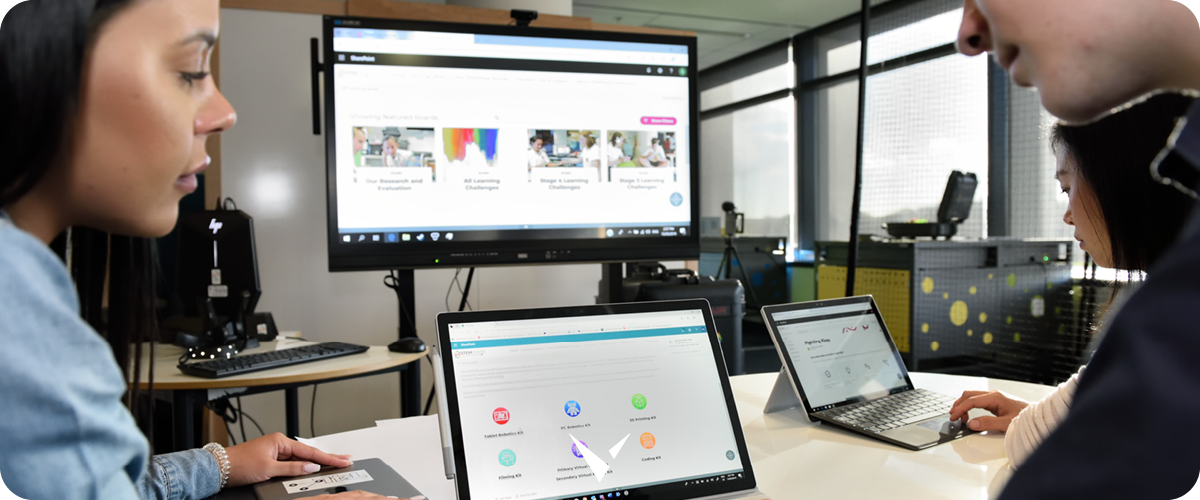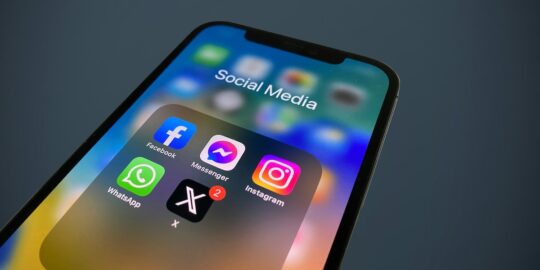
Screen Sharing Options: The Main Difference Between Casting and Mirroring
Learning the difference between casting and mirroring can be helpful for you to determine what’s the best screen-sharing option for your school. According to EdTech Magazine, “While some may use the terms casting, mirroring and sharing interchangeably, there are actually key differences among them, which come into play when choosing the right solution for a particular institution.”
In short, the same report defines:
- Screen mirroring means you can project whatever happens on your device onto a screen, projector, or some other type of display. Using this feature, you can share anything you do on your computer, tablet, or phone. Whether you switch between documents, share a presentation, check emails, or watch videos, your audience will be able to see what happens.
- Screencasting, on the other hand, implies transferring selected online-based media content from a phone or tablet to a monitor or another TV. You can choose to play movies, video clips, or music, for instance. Its main difference with mirroring is that you can only play and stream what you choose, and your device keeps running other applications without interruption.
If you haven’t implemented an education-focused platform at your school yet, you may be more familiar with screen sharing. Zoom or Google Meet, for instance, offer this feature to show other remote users what happens on your screen. You can select a window, a browser tab, or your whole desktop. However, screen sharing with a leading ed-tech platform can make this feature very useful in in-person or hybrid academic settings.
Figuring out what to implement in your school starts by learning the essential difference between casting and mirroring and what screen sharing adds to the mix. Let’s now briefly explore in more detail how teachers use these modes during class.
Related: How Tools for Student Engagement are Closing Learning Gaps
Three Ways Teachers Leverage the Difference Between Casting and Mirroring
As an IT professional, it may be interesting to learn how the primary users of the casting and mirroring technologies leverage these features in class, especially after school reopening.
Multi-screen classrooms are becoming particularly popular post-Covid, as they enable hybrid educational models. According to a recent report, “Multiple displays enable teachers and students to see and engage with each other easily. To affordably transition to this new model and create a cohesive environment for everyone, schools can rely on the latest budget-friendly display, projector, and presentation solutions designed for education.”
But, as you will learn in the following section, there are modern software solutions to power up and scale these settings at schools, so teachers can share content and make sessions more interactive.
Before that, find below a quick review of the top three ways teachers leverage the difference between casting and mirroring in-class screens:
1) Collaborate in the classroom
A teacher and their students must collaborate in order to establish a positive relationship. Student engagement is highly dependent upon the quality of the relationship between them and their teachers. In this context, for instance, a teacher can use screen sharing to provide feedback or edit a student’s work on the main screen while the rest of the class comments on it. Teachers will be able to see more academic engagement and progress with this dynamic.
2) Playing educational media content
Digital media is becoming more and more common in the classroom. It can help students develop a longer attention span, increase motivation to learn, engage them more in school, and help them perform better academically while becoming more tech-savvy. For this reason, teachers use screencasting tech to play video, animations, and music. This lets them explain concepts, reinforce learning, and sometimes just help students unwind.
3) Motivating feedback and edits between peers
Sharing students’ work is a crucial part of the collaboration. Generally speaking, students of all ages are social and creative while in the classroom and like to exchange ideas, views, concerns, and experiences. These constructive interactions boost their confidence level. In this case, sharing the screen increases healthy collaboration and provides the opportunity to work together as a group.
This review makes it clear that teachers use a mixture of mirroring, casting, and sharing in their day-to-day. Is one superior to another? Can a platform handle all three at once?
How Can IT Administrators Benefit from Screen Sharing Technologies?
Understanding the difference between casting and mirroring on-screen might leave you wondering which is better. The best platform on the market allows your school to make use of all of these options for a small investment and with minimal hardware and wiring.
It makes sense to consider the benefit of classroom screen sharing technology even when there may be doubts about its appropriate use. Essentially, IT administrators, teachers, and students can share information more conveniently. Students can share class materials with teachers, and IT administrators control the hardware centrally. With the right tech partner, there should be nothing to worry about.
In order to understand how the best digital screen sharing solution benefits your school and its administrative staff, let’s look at some of the specific advantages.
Streamlined information access
For school administration staff to function correctly, they need access to students, teachers, and school records. Administrators will have the ability to access information about each classroom and campus at any time and from anywhere without having to sort out all of the different files manually. As a result, they will be able to save time and increase productivity with the right solution.
Low maintenance
Another significant benefit is that once you deploy the platform, it enables students to work together and communicate easily with one another as well as with their teachers. There is little to no need for IT administrators to intervene, as the system retains its regular updates and is easy to manage from a central control panel.
Device Compatibility
If you choose and deploy a modern solution, you can make sure it works on a variety of operating systems and devices. For the best return on investment, choose an agnostic classroom screen-sharing technology so it adapts to any displays and devices you have available.
Ease of use
Suppose a teacher can’t use the platform seamlessly or has trouble navigating it. In that case, you and other IT administrators will be investing significant extra work, and your classrooms may not even be able to use it at all. To avoid this, you should choose the best screen-sharing solution based on its reliability, combined with its ease of use.
The use of wireless screen-sharing platforms may become more prevalent as educational institutions seek collaborative, active learning environments and video-driven content. Therefore, it is critical for you, as an IT leader, to begin planning and implementing early to stay ahead of the curve.
Although technology offers many advantages, it can quickly become unappealing if you have to spend too much time deploying, training, maintaining, and troubleshooting. Make sure your teachers are empowered as soon as possible to control what the rest of the class can see on their screens either by sharing, mirroring, or casting.
No tool can do this job as effectively as one specifically designed for educational use; that considers the challenges and opportunities every classroom presents. Choose student engagement software developed exclusively for educational use. Partner with Vivi. Book a demo now.



